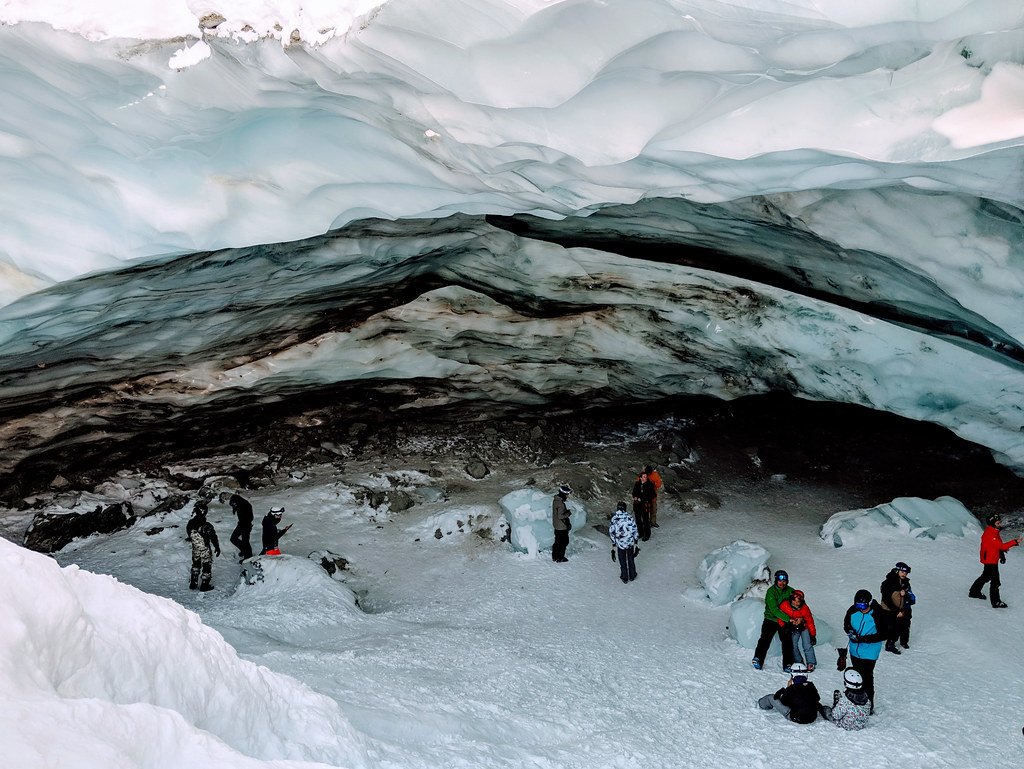Step inside the hidden world beneath glacial surfaces, where nature orchestrates its most extraordinary acoustic performances. These mysterious underground chambers transform simple ice and water into complex musical instruments that produce haunting melodies you’ll never hear anywhere else on Earth.
What you’re about to discover will completely change how you think about the frozen wilderness. From the deepest caverns of Greenland to the glacial tunnels of Iceland, wind and thaw work together as invisible composers, crafting sounds that range from delicate whispers to thunderous roars. Let’s explore these remarkable frozen concert halls where nature creates its own symphony.
When Glaciers Become Concert Halls

The first time researchers realized that glacial crevasses actually sing, they thought they were hearing things, but then discovered that water was sometimes resonating in ice caves to create a collection of droning pitches that could be light and airy or very deep and ominous. These natural acoustic chambers possess qualities that would make any sound engineer jealous.
The acoustical climates inside glacier caves strongly depend on the morphology and dimensions of the caves, while the analysis of measurement locations shows the strong influence on sound absorption by the snow located at the entrance. Picture walking into a cathedral made entirely of ice, where every whisper transforms into something magical.
The curved walls and domed ceilings create perfect natural resonators. One tour guide who sang inside an ice cave chapel noted that the acoustics were excellent, describing how the voice carried like an angel’s throughout the frozen space.
The Science Behind Singing Ice

Water resonating in large icy spaces creates ominous droning pitches, while massive bubbles pulse like the breath of a sleeping dragon. This phenomenon occurs when meltwater streams carve intricate tunnel systems through glacial ice.
Most glacier caves start with water running through or under the glacier, often originating on the surface through melting and entering the ice through vertical shafts before exiting at the glacier’s base. The moving water acts like a bow across violin strings, creating vibrations that resonate through the ice.
Large ice cavities reflect taps into multiple echoes, each slightly delayed, and listening to those echoes and timing them could help map the locations of hidden glacier caves that stretch out beneath the surface. Scientists have discovered that these acoustic properties reveal the internal structure of glaciers in ways visual inspection never could.
Wind as the Invisible Conductor

The kind of sound glacier tunnels make when air rushes through at ten to fifteen miles per hour resembles a flag caught in strong wind. This natural phenomenon creates one of the most distinctive sounds you can experience in ice caves.
When the surface of glacial ice melts, the air above the glacier cools and becomes heavier than the surrounding air, flowing down the glacial valley as glacier wind that can also flow out of ice caves. These wind patterns create a complex acoustic environment where different chambers produce different tones.
The interaction between wind speed and cave geometry produces sounds ranging from gentle whispers to powerful roars. Visitors often notice not just visual experiences, but the soft cracking as ice shifts, the drips as tiny water features form inside, and the sound of the wind.
The Daily Symphony of Thaw

A single crack can go from a torrent of melodic gurgles in the afternoon, to nothing but a few resonant drips at night, to a slow build of a four hour dawn chorus as the sun returns. This daily transformation creates what researchers call the glacier’s natural rhythm.
The glacier falls asleep and then wakes in the morning with a dawn chorus, but like everything with glaciers it is in slow motion, similar to bird choruses recorded at sunrise around the world. The temperature changes throughout the day fundamentally alter the acoustic properties of these frozen instruments.
As sunlight warms the glacier’s surface, meltwater slips into tiny cracks, and when that water refreezes, it releases sharp, sudden sounds that give scientists clues about how fast the glacier is heating up.
Underground Rivers Create Bass Lines

Explorers have discovered deep jagged cracks that house what they call the “breath of the glacier,” where they can feel pulsing bass in their chest from large moulin waterfalls creating air bubbles in sub-glacier rivers. These underground water systems act like massive pipe organs.
Below the thick glacier ice, meltwater carves out hidden rivers that twist through darkness. These flowing waters create the foundation for the cave’s acoustic environment, providing a constant bass note that underlies all other sounds.
Large waterfalls inside glaciers create massive air bubbles in underground rivers, and these bubbles burst out every few seconds with sounds that resonate up through crevasses like a sleeping dragon. The result is a rhythmic, almost breathing quality that makes the entire glacier feel alive.
Ice as Nature’s Percussion Section

As explorers move through narrow, undulating tunnels, the ice hisses and pops and booms and crackles, with sounds emanating from air bubbles trapped in the ice that are liberated by movement. Every step becomes part of the performance.
Many visitors experience the sounds of ice shifting and making creaking noises, which serves as an excellent reminder that the glacier is a living, moving force of nature. These percussive elements add texture and complexity to the cave’s natural soundtrack.
The acoustic performance starts with a soft snap, then quickly builds into a scatter of crackling pops as meltwater slips into tiny cracks and refreezes, releasing sharp, sudden sounds.
Seasonal Changes in the Frozen Orchestra

Minor shifts occur within ice caves from week to week, and warmer seasons bring more significant changes as old ice caves begin to wear away while new ones form through the movement of glacial waters. Each season brings a completely different musical program.
Ice caves have different shapes, capacity, or wall structures that most often form anew every winter season, creating an interesting aspect of glacier cave acoustics that has never been investigated before. No two performances are ever identical.
Winter creates the most stable acoustic environments, while summer introduces dramatic variations. The traditional ice cave season runs from November to March when the weather has been consistently cold, ensuring that the caves are stable enough to visit and explore properly.
The Haunting Beauty of Glacier Harmonics

Visitors can hear ominous droning pitches as water resonates in large icy spaces, and the bellies of glaciers sound like giant organic spaceships. These complex harmonics create an otherworldly atmosphere that defies description.
The glacier hums quietly across the frozen calm, creating layered songs as tiny cracks begin to vibrate together. Multiple frequencies combine to create rich, complex tones that seem to come from everywhere at once.
The natural reverb and echo effects enhance every sound. These caves usually have scalloped, translucent walls that transmit blue light while creating unique acoustic properties.
Recording Nature’s Frozen Symphony

Researchers have discovered they can quantify glacial sounds using simple tools like iPhones, collecting meaningful environmental information and producing insightful studies about these natural acoustic phenomena. Technology now allows us to capture and study these ephemeral performances.
There’s incredible sonic variation from a single crevasse over twenty-four hours, with three factors contributing to this variety: the ebb and flow of meltwater with the movement of the sun, that same meltwater carving new shapes in the ice, and the movement of the glacier itself.
Professional sound recordists describe these environments as offering sounds of natural wonders only heard in rare glacial conditions. These libraries capture acoustic experiences that most people will never encounter in person.
The Future of These Frozen Instruments

When researchers returned to photograph ice caves just one year later, they found themselves standing in gravel parking lots where the caves once existed, as the glacial formations had completely disappeared. Climate change threatens these natural concert halls.
Many glacier caves are relatively unstable due to heat transportation and glacial motion, subject to localized or complete collapse as well as elimination by glacial retreat. Each performance could be the last in any given location.
The urgency to document and experience these acoustic wonders grows stronger each year. The ice, many observers note, seems to be groaning at the persistent threat it feels from global warming, crying for help.
Conclusion

These singing ice caves represent one of nature’s most remarkable acoustic achievements, where wind and thaw collaborate to create haunting melodies that exist nowhere else on Earth. From the bass notes of underground rivers to the percussion of shifting ice, these frozen instruments produce symphonies that challenge our understanding of what music can be.
The next time you think about glaciers, remember they’re not just massive blocks of ice slowly moving across the landscape. They’re living, breathing, singing entities that create some of the most beautiful sounds our planet has to offer. What would you have guessed could make such extraordinary music from nothing more than frozen water and moving air?




